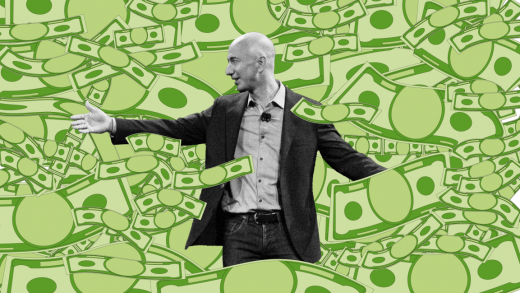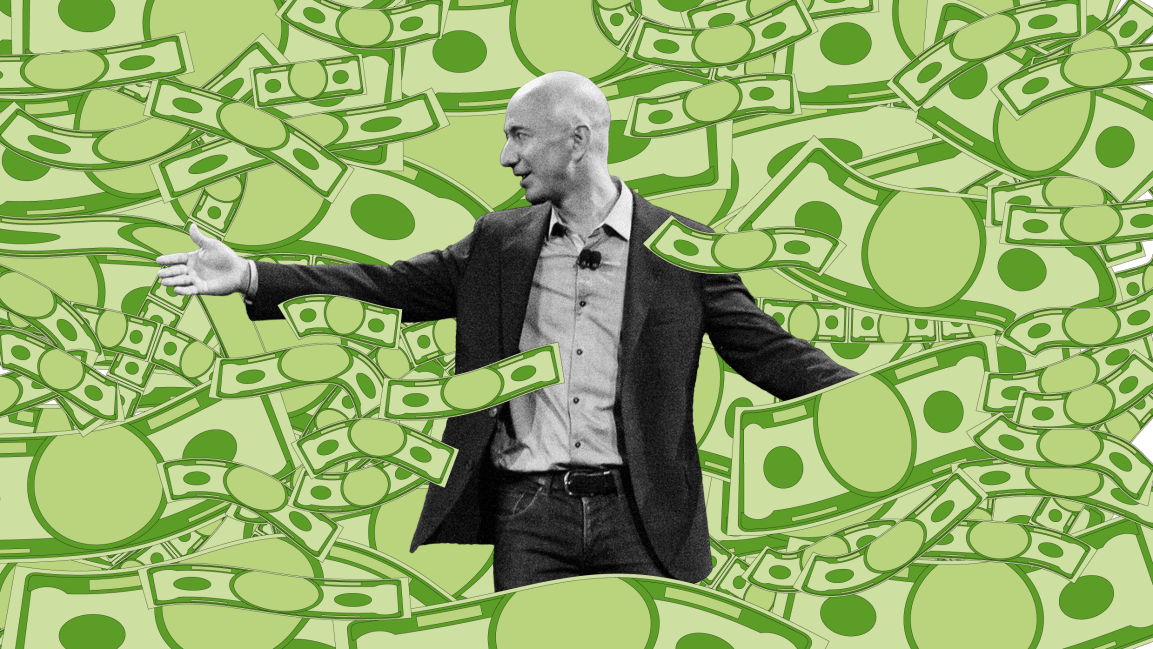Jeff Bezos, here’s how to give away $10 billion to stop climate change
Last Monday, Jeff Bezos announced that he was committing $10 billion to the new Bezos Earth Fund, designed to “amplify known ways and to explore new ways of fighting the devastating impact of climate change.” He hasn’t yet shared details about how the fund will choose to spend the money. But if it’s done the right way, it could help reshape the climate fight. If it’s done wrong, it could do nothing—or even set back the vital effort.
The money isn’t nearly enough to fund the massive transition that the world needs—a Morgan Stanley report last fall estimated that we’ll need to invest $50 trillion to reach net-zero emissions by 2050, including $14 trillion poured into renewables and $11 trillion to build electric cars and charging infrastructure. But Bezos’s cash could help lay the groundwork for those investments to happen.
If Bezos’s funds help ensure that we make smart, climate-ready decisions, they can be massively consequential. But they could equally be frittered away.”
Right now, the world spends around $5 trillion a year on energy and another $6 trillion on related infrastructure, says Hal Harvey, CEO of Energy Innovation, a nonpartisan energy and climate policy firm. What’s critical is “the adjustments you can make to where that money lands,” he says. “We need to make sure that existing cash flows land on green choices, not brown choices. Solving the climate problem is not a matter of conjuring up additional trillions of dollars, it’s a matter of aiming existing cash flow to the right places. That immediately unveils an ideal role for philanthropic money, which is to help make that shift happen.”
Philanthropic donations have led to sweeping changes in the past, says Harvey, who wrote a book on the subject called Money Well Spent. Rockefeller grants led to American research universities. The Rockefeller and Ford Foundations helped launch the Green Revolution, which doubled agricultural productivity and has been credited with saving at least a billion lives. Philanthropy helped bring Western medicine to China and helped support the development of the AIDS cocktail. A Gates Foundation program has vaccinated three-quarters of a billion children and prevented 13 million deaths. “The potential for leverage is outstanding,” Harvey says.
For climate activists and scientists, $10 billion is significant. The previous philanthropic record, in 2018, was $4 billion pledged by 29 foundations. One researcher has calculated that fossil fuel companies and other lobbyists spent more than $1.2 billion fighting climate policy over 16 years, from 2000 to 2016.
Change has to happen at multiple levels, including, of course, in business. After the announcement of the new fund, some environmental groups—and some Amazon employees—criticized Bezos for not doing more inside Amazon. The company announced last year that it planned to shift to 100% renewable energy by 2030; Google reached the same goal in 2017. It’s rolling out tens of thousands of electric delivery vans. By 2040, it plans to be carbon neutral. But it still sells services to the oil and gas industry, and as of 2018, the company’s annual carbon footprint was an enormous 44.4 million metric tons. (Some have also criticized the fact that Bezos is making a $10 billion donation at all—if taxes were structured differently he wouldn’t be worth an estimated $130 billion, and if government worked correctly, arguably, the right climate action would already be underway.)
Bezos has already invested in some other climate solutions, including through Breakthrough Energy Ventures, a venture fund that supports new climate tech. But the new fund can play a different role. Harvey argues that the best leverage will come from policy. “You have to look at two things—which policies matter and where do they matter?” he says. “If Bezos’s funds help ensure that we make smart, climate-ready decisions, they can be massively consequential. But they could equally be frittered away.”
The place to start, he says, is with the largest sources of emissions. Twenty countries emit the majority of the world’s CO2, and the majority of those emissions come from four sectors—utilities, transportation, buildings, and industry. “In each of those sectors, there’s between one and three policies that deliver the goods,” he says. “And then there are dozens that are essentially decorative.” In renewable energy, for example, putting a renewable energy standard in place—a policy that requires a state to get a certain amount of energy from renewables and keep ramping that up—is most effective. Implementing it correctly, including making needed changes on the grid, is key.
Most of the solutions for climate change can come from existing technology—the missing link is policy to scale that technology up quickly
“One could imagine some funds coming from Bezos to help public utilities commissioners around the country decarbonize our grid rapidly and cost-effectively,” he says. “And then if you fix the grid, you have leverage against transportation because of electric vehicles, and you have leverage against buildings because of electrification of buildings, and you have leverage against industry for the same reason.” Even without leadership from the federal level, he says, states can make progress, because they set electric utility policy. States also set building codes and can create carbon prices, as in the Regional Greenhouse Gas Initiative, a program created by states in the Northeast. In a book published in late 2018 called Designing Climate Solutions, Harvey explains in detail which other policy changes would have the biggest impact.
Bezos could also be tempted to invest in shiny new innovations that are unproven and seem like they could be an instantaneous solution to the climate crisis. But that would be a mistake. Most of the solutions for climate change, Harvey says, can come from existing technology—the missing link is policy to scale that technology up quickly, both in the U.S. and in the other countries that are the largest emitters. (Some other countries may be easier to work with in terms of policy change, because things like energy choices are seen as technical problems, not political ones, as they are in the U.S.) If he had $10 billion to invest, Harvey says, “I would put 90%-plus on policy. Because we’re out of our carbon budget. If we don’t bend curves very fast, we’re going to blow past two degrees [of warming].”
“I think people should give credit to Bezos for understanding that this is a big problem and making a really big commitment,” he says. “And they should cross fingers and hope that the funds get well spent. We ourselves need the discipline to avoid parochialism in making suggestions. This is not about my organization or your organization. This is about developing a strategy that delivers carbon reductions at speed and at scale.”
(24)



